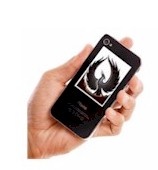|
|


IVR Application Development Systems
This section of our technical library presents information and documentation relating to IVR Development and custom IVR software and products.
Business phone systems and toll free answering systems (generally 800 numbers and their equivalent) are very popular for service and sales organizations, allowing customers and prospects to call your organization anywhere in the country.
The PACER and WIZARD IVR System is just one of many DSC call center phone system features..
What is IVR Software?. An Interactive Voice Response (IVR) processes inbound phone calls, plays recorded messages including information extracted from databases and the internet, and potentially routes calls to either inhouse service agents or transfers the caller to an outside extension.
Contact DSC today. to learn more about our IVR services and IVR application development software.
Optimizing the Supply Chain Through Trial Simulation
Page 4
By: Damian McEntegart, Nikki Dowlman, Martin Lang, Graham Nicholls
Stephen Bacon, Jeremy Star, Bill Byrom
Applied Clinical Trials
Simulation tools empower sponsors to confidently choose the best drug supply strategies in IVR Trials.
Study overview
Pack types and dispensations. Six treatment groups each received two different pack types at randomization and at subsequent re-supply visits; there were five pack types in all. Four re-supply visits occurred at fortnightly intervals.
Randomization method. The randomization was stratified at the country level, with recruitment spanning 10 countries in Europe, Asia, and North America.
Supply logistics. Local depots were in place to issue supplies to centers in each country. Delivery into two of the countries required import licenses that meant that the shipment times from the central depot to the relevant local depots were prolonged and more variable.
Subject enrollment. In some centers of one Eastern European country, all the subjects to be enrolled had the potential to be rapidly entered into the study in batches on a single day of the week, e.g., each subject would be enrolled in the IVR system at 30-minute intervals. There was a high probability that these centers would all have their clinics on the same day of the week. Subjects from other centers and countries were enrolled in a more conventional manner over a period of months; recruitment at these centers was expected to vary and for convenience was grouped into three types-low, medium, and high, with mean recruitment rates of 0.2, 0.4, and 0.6 subjects per week according to a Poisson distribution.
Medication management algorithm. The medication management strategy involved trigger-re-supply for the randomization stocks at site, and predictions for the re-supply visits. A trigger-re-supply strategy was also employed to manage the re-supply of local depots.
Simulation experiment objective
The objective of the simulation was to estimate the total amount of each pack type required for the study while keeping the risk of supply failures to a minimum. This required setting center level supply strategies for the three conventional center types (low, medium, and high recruiting centers) and the batch recruiting centers. Different depot level supply strategies also had to be set taking into account those countries which contained batch entry centers, and those with longer lead times for supply from the central depot.
Simulation findings
The simulation experiment comprised two stages. The first stage was to investigate the optimal initial supply requirements for the batch recruiting centers. Once this was determined, the simulation was repeated to explore optimal initial supplies and re-supply parameters for the complete study.
Stage 1: Initial supply requirements for the batch-recruiting centers. It was assumed each batch-recruiting center would enter 12 subjects per week on any given day in the initial stages of the trial. Because randomization was stratified at country level, it was possible that, in the worst case, all 12 subjects could be recruited to the same treatment group. In this case a total of 60 packs (12 of each of the five pack types) would be required initially. But in 1,000 simulations, the maximum number of subjects ever randomized to one treatment was seven.
It was, therefore, further informative to examine the maximum usage of each pack type over the 1,000 runs; these could then be used as the optimum buffer stock levels for the sites. The sum of the maxima over all pack types was 51 packs. This would accommodate all possible outcomes observed when the study was simulated 1,000 times. In contrast, supplying only 44 packs to each batch-recruiting site coped with 97.3% of the 1,000 simulation runs. This less conservative strategy may be considered optimal, as the potential supply wastage and site storage requirements were limited with only a small possibility of a pack type being initially unavailable. These data were used as the starting point for defining the supply strategy parameters for the batch recruiting centers further explored in stage 2.
Stage 2: Overall study supply strategy parameters. The relative merits of three different strategies were explored in stage 2 of the simulation experiment. For each pack type, different initial supply volumes, trigger levels, and stock levels were assigned for the low, medium, high, and batch recruiting centers.
Page
[1]
[2]
[3]
[4]
[5]
[6]
Next Page
Clinical IVR Surveys and Reminder Services
 Database Systems Corp. (DSC) offers complete interactive voice response IVR platforms and IVR outsourcing services for clinical testing and voice message broadcasting for reminders and notifications.
Our clinical interactive voice response systems (IVRS) can be programmed to collect data directly from patients for pharmaceutical companies, healthcare organizations, and researchers.
Database Systems Corp. (DSC) offers complete interactive voice response IVR platforms and IVR outsourcing services for clinical testing and voice message broadcasting for reminders and notifications.
Our clinical interactive voice response systems (IVRS) can be programmed to collect data directly from patients for pharmaceutical companies, healthcare organizations, and researchers.
Our IVRS acts as an automatic answering service that collects useful medical information from a caller for clinical surveys and clinical trials.
Patient appointment reminders and prescription drug notifications and reminders can be easily sent by phone.
By responding to prompts provided by our IVR phone survey dialer, callers can now respond to clinical trial surveys and our systems will collect this information in an organized fashion. Clinical survey participants in particular can become instantly more productive by letting the phone system gather caller information, verify caller identity, and provide the caller with needed information and instructions.
Contact Database to learn more about our IVR Servers and Interactive Voice Response Phone Servers.
|




 Database Systems Corp. (DSC) offers complete interactive voice response IVR platforms and IVR outsourcing services for clinical testing and voice message broadcasting for reminders and notifications.
Our clinical interactive voice response systems (IVRS) can be programmed to collect data directly from patients for pharmaceutical companies, healthcare organizations, and researchers.
Database Systems Corp. (DSC) offers complete interactive voice response IVR platforms and IVR outsourcing services for clinical testing and voice message broadcasting for reminders and notifications.
Our clinical interactive voice response systems (IVRS) can be programmed to collect data directly from patients for pharmaceutical companies, healthcare organizations, and researchers.